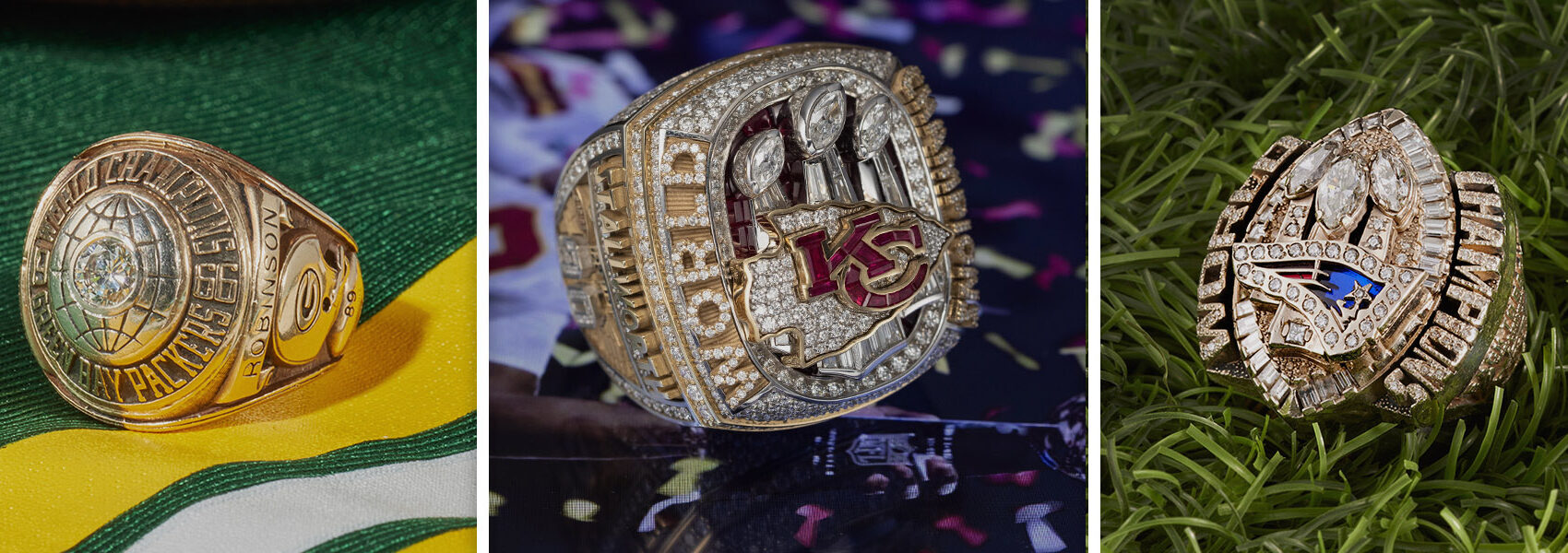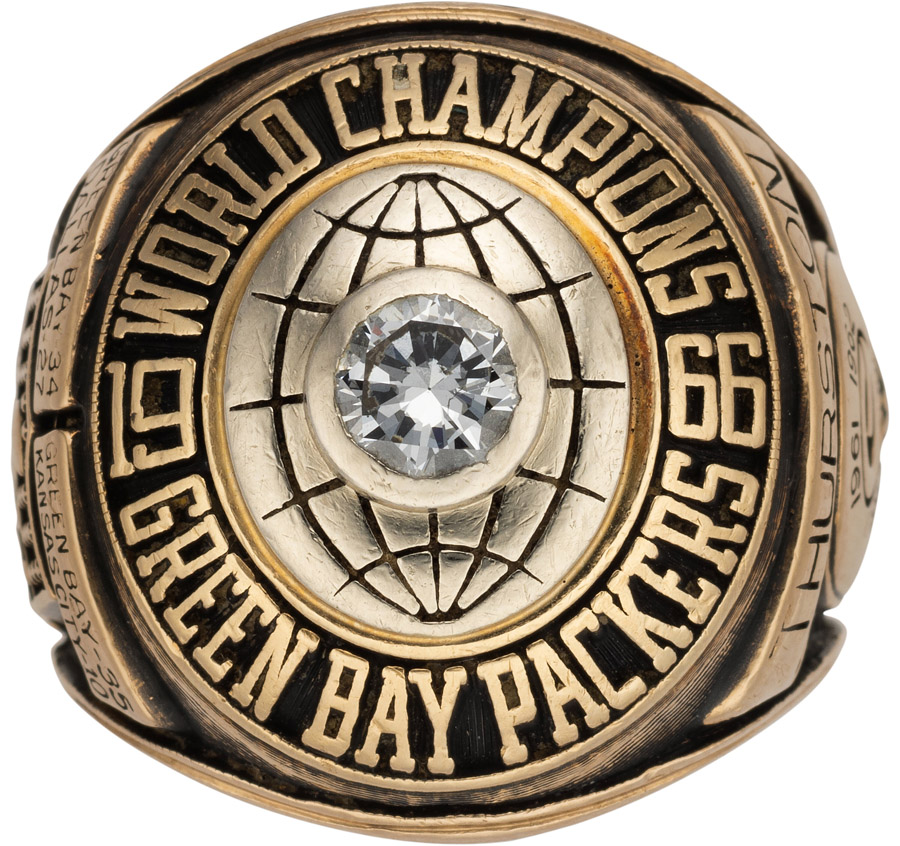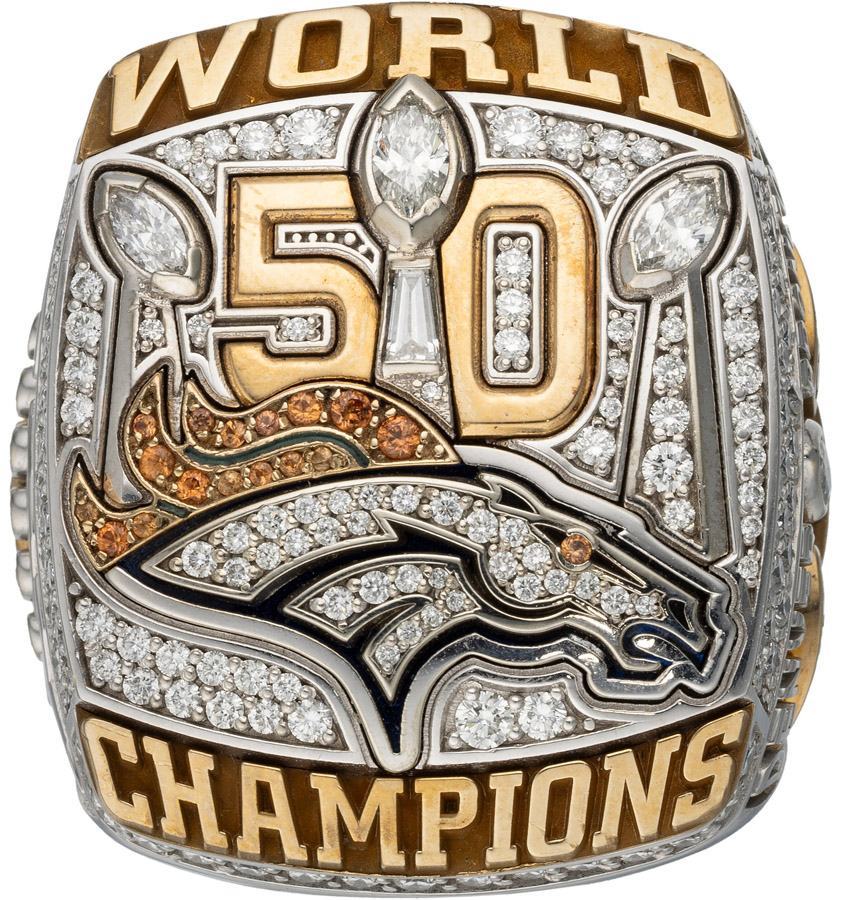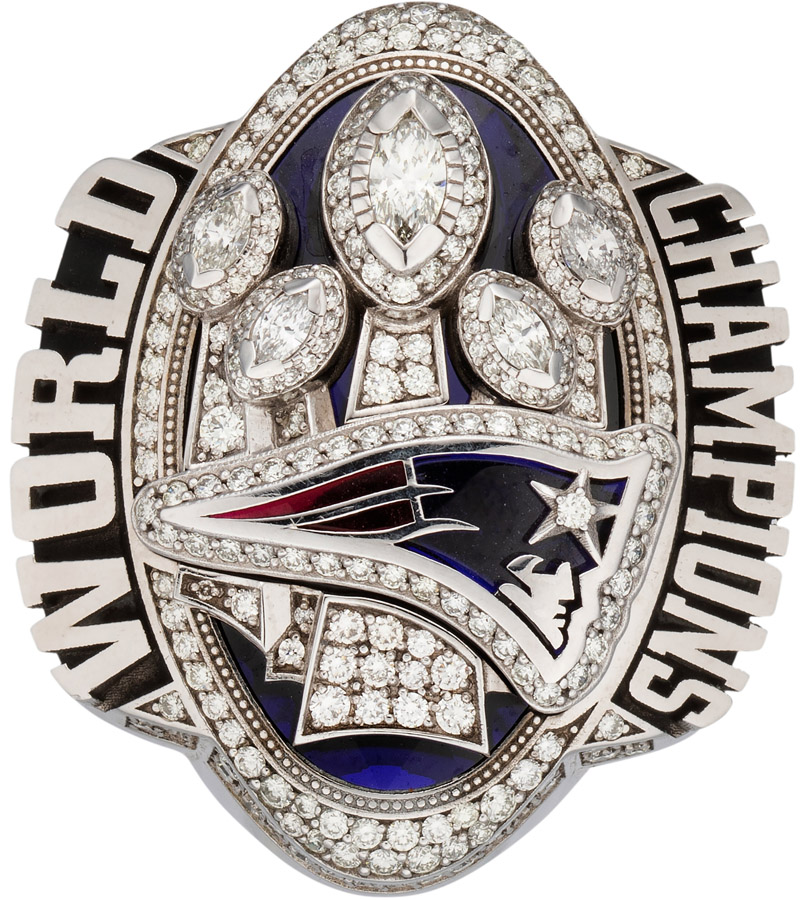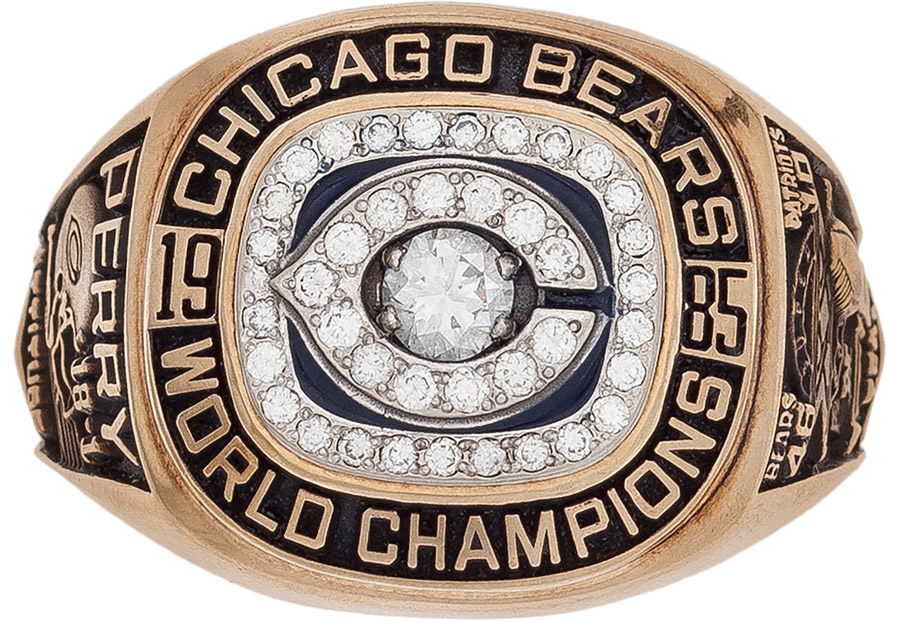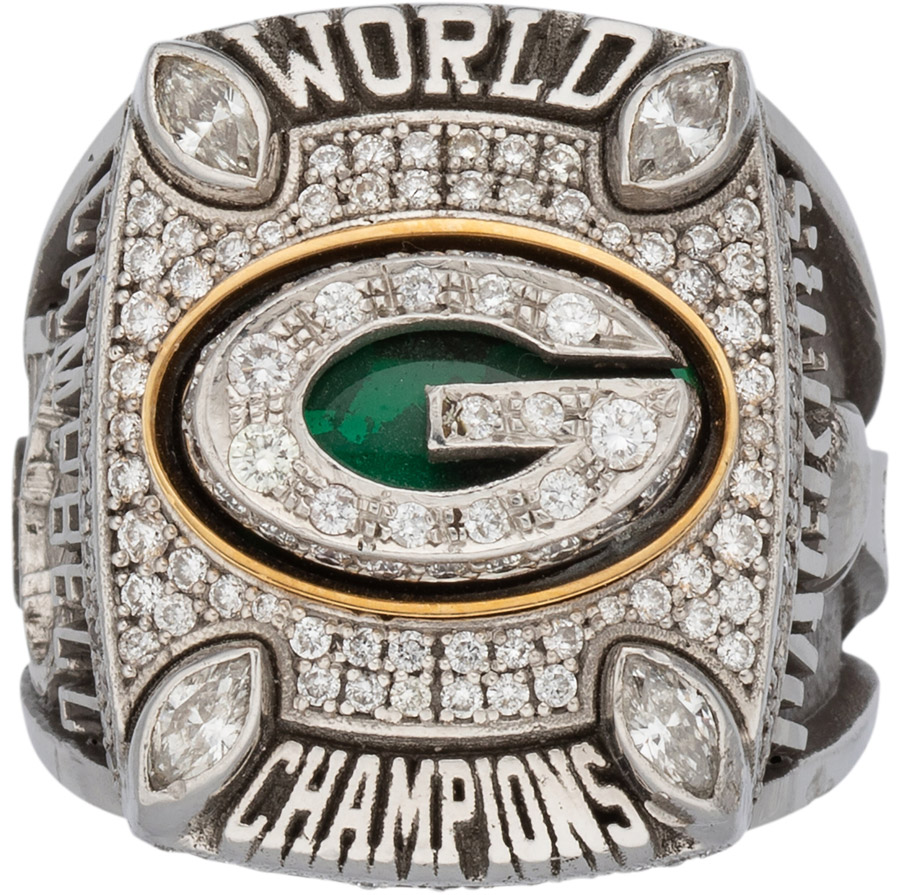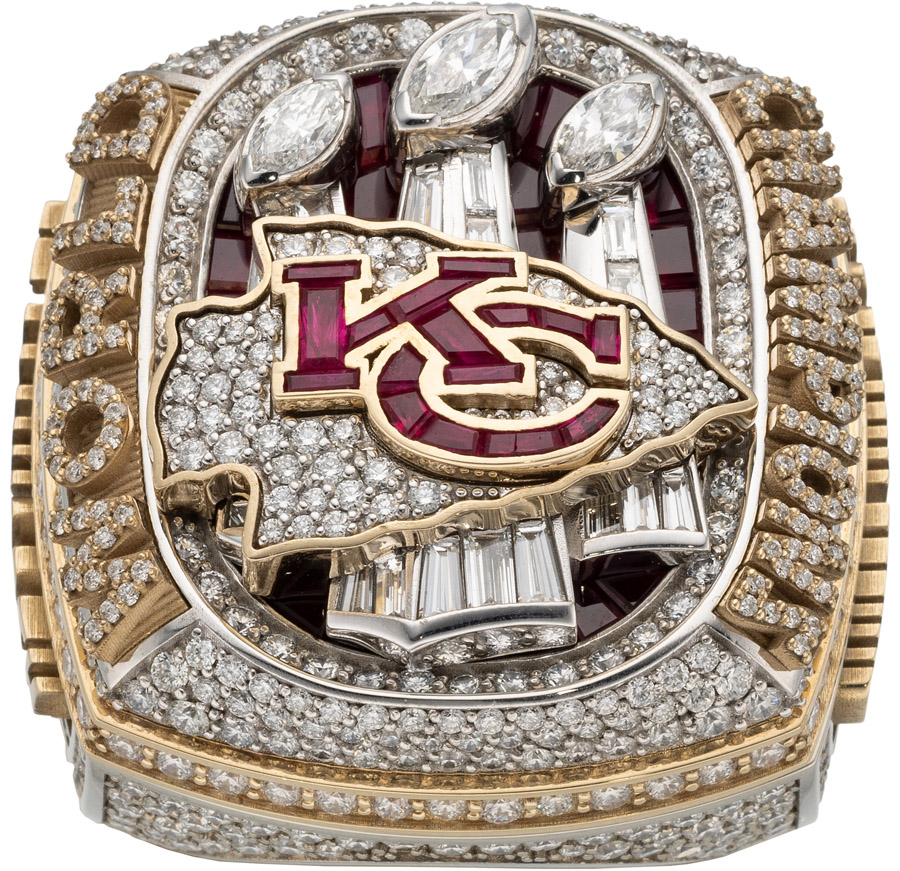HOW THE PRIZE FOR FOOTBALL’S GREATEST FEAT WENT FROM SIMPLE TO SPECTACULAR
By Steve Lansdale
There is a reason that players sometimes are described as “chasing a ring.” The phrase often is applied to a veteran player who joins a new team, either by signing a free-agent contract or by agreeing to waive language restricting a trade to another. In the case of grizzled veterans who hold off retirement for another year or sign a contract that isn’t the most lucrative of multiple offers, the reason often is the same: That player is chasing a ring. When jawing with an opponent in the heat of battle, some players even point to their ring finger. The unsaid message: Respect me. You don’t have a ring, but I do. The ring, of course, is a championship ring, emblematic of winning the sport’s ultimate contest.
On February 9, one NFL team will earn the right to order the next round of Super Bowl rings after celebrating a victory in Super Bowl LIX in New Orleans.
The Green Bay Packers’ Super Bowl I ring, with its lone diamond, looks plain in comparison to the jewel-encrusted hardware awarded to today’s Super Bowl winners.
Over the decades, the rings commemorating football’s greatest accomplishment have evolved as much as the game itself. For the first Super Bowl, played in 1967 and televised to 50 million at-home viewers, a 30-second commercial cost $42,000. By comparison, 123.4 million viewers watched last year’s Super Bowl across a variety of platforms. The cost of a 30-second commercial: $7 million.
“As the game – and the attention people pay to the game – has grown, the rings have followed a similar trajectory,” says Chris Ivy, Director of Sports Auctions at Heritage. “At first, they were fairly simple, but around 2016, when the Denver Broncos won Super Bowl 50, they started to get noticeably larger and more elaborate.”
For the Super Bowl’s 50th edition, the Denver Broncos received this opulent creation featuring 212 diamonds and a team logo studded with orange sapphires.
The hardware awarded to the winners of Super Bowl I looked like most people’s idea of a high school class ring, with a 1-carat diamond in the center and the words “WORLD CHAMPIONS” and “GREEN BAY PACKERS” above and below the solitary stone. By Super Bowl 50, that one diamond had turned into 212. That game’s ring also featured the Super Bowl 50 logo, the Denver Broncos’ three Vince Lombardi Trophies and the team’s logo, complete with a horse’s mane crafted from orange sapphires.
The New England Patriots’ Super Bowl LI ring is encrusted with 283 diamonds, representing the greatest comeback in Super Bowl history, from a 28-3 deficit.
Since then, Super Bowl rings have only grown glitzier. The rings the Kansas City Chiefs received for winning Super Bowl LVIII last year resemble glittery miniature spaceships. The top of the ring features the Chiefs’ arrowhead with the interlocking “KC” logo “meticulously crafted from 16 custom-cut rubies, symbolic of the 16 outright division titles in franchise history.” The yellow gold arrowhead is set with 50 diamonds and sits atop four diamond-studded Vince Lombardi Trophies and between the words “WORLD” and “CHAMPIONS.” In all, each ring includes 529 diamonds and 38 rubies. But the hardware’s most elaborate feature is the ring top that lifts up to reveal a diagram of the play that produced the game’s winning points.
The biggest Super Bowl ring ever created was awarded to William ‘Refrigerator’ Perry when the Chicago Bears won Super Bowl XX.
Similarly, the Tampa Bay Buccaneers’ Super Bowl LV ring won in 2021 and the Los Angeles Rams’ Super Bowl LVI ring won the following year each have a top that can be removed to reveal a scale model of their home stadiums; the Rams’ miniature version even includes a small piece of turf from SoFi Stadium’s field. Additionally, the Rams’ ring from that year features approximately 20 carats of diamonds, the most diamond carat weight in history for an NFL championship ring.
Modern Super Bowl rings can weigh as much as a quarter of a pound. As a result, fewer and fewer players wear their rings these days, opting instead to keep them as display pieces or even tucked away in a vault for safekeeping. The largest known Super Bowl ring was the one presented to William “Refrigerator” Perry when the Chicago Bears won Super Bowl XX in 1986. “I could put three fingers through it pretty easily,” Ivy says of the ring, which sold at Heritage in 2015 for $203,150. For context: The sport’s most behemoth linemen often get rings that are a size 17 or 18. The Fridge’s ring was a size 25.
The Green Bay Packers’ Super Bowl XLV ring is the only Super Bowl ring set in platinum.
The rings, which cost an average of $30,000-$50,000 each, are given to players, coaches, administration and often support staff for the winning team. Most of the time, they are made of yellow or rose gold (the Green Bay Packers’ 2010 ring was the only one forged from platinum) and encrusted with more jewels with each passing year. The rings’ design usually is left to the winning team’s owner or select members of the team’s upper management, but occasionally star players like quarterbacks Tom Brady and Patrick Mahomes are allowed to weigh in with suggestions.
Super Bowl rings also represent the ultimate form of bragging. The 2016 New England Patriots’ Super Bowl LI ring, for example, is encrusted with 283 diamonds – a seemingly random number, except to those who remember that the Patriots trailed the Atlanta Falcons, 28-3, before rallying to win the fifth of the franchise’s six championships.
The Kansas City Chiefs’ Super Bowl LVII ring features just over 16 total carats, including 609 round diamonds, 16 baguette diamonds, four marquise diamonds and 35 custom-cut rubies.
“There’s an element of competition, of being bigger and better than previous rings,” Ivy says. “But it’s also about creativity. The ring that the Kansas City Chiefs won in 2023 was amazing, and not just because of the size or the 16 carats of diamonds or the removable top that can be worn as a pendant. The rings were presented in boxes with a video screen under the lid that showed highlights from the game and the postgame celebration.”
What comes next is anybody’s guess. The possibilities extend as far as the team brass can stretch their imagination.
“Who knows?” Ivy says. “Maybe the next ring will fit two or three fingers at the same time. It’s hard to say. But one thing is certain: These rings are the ultimate individual memento for winning the Super Bowl, and they keep getting better.”
 STEVE LANSDALE is a staff writer at Intelligent Collector.
STEVE LANSDALE is a staff writer at Intelligent Collector.

